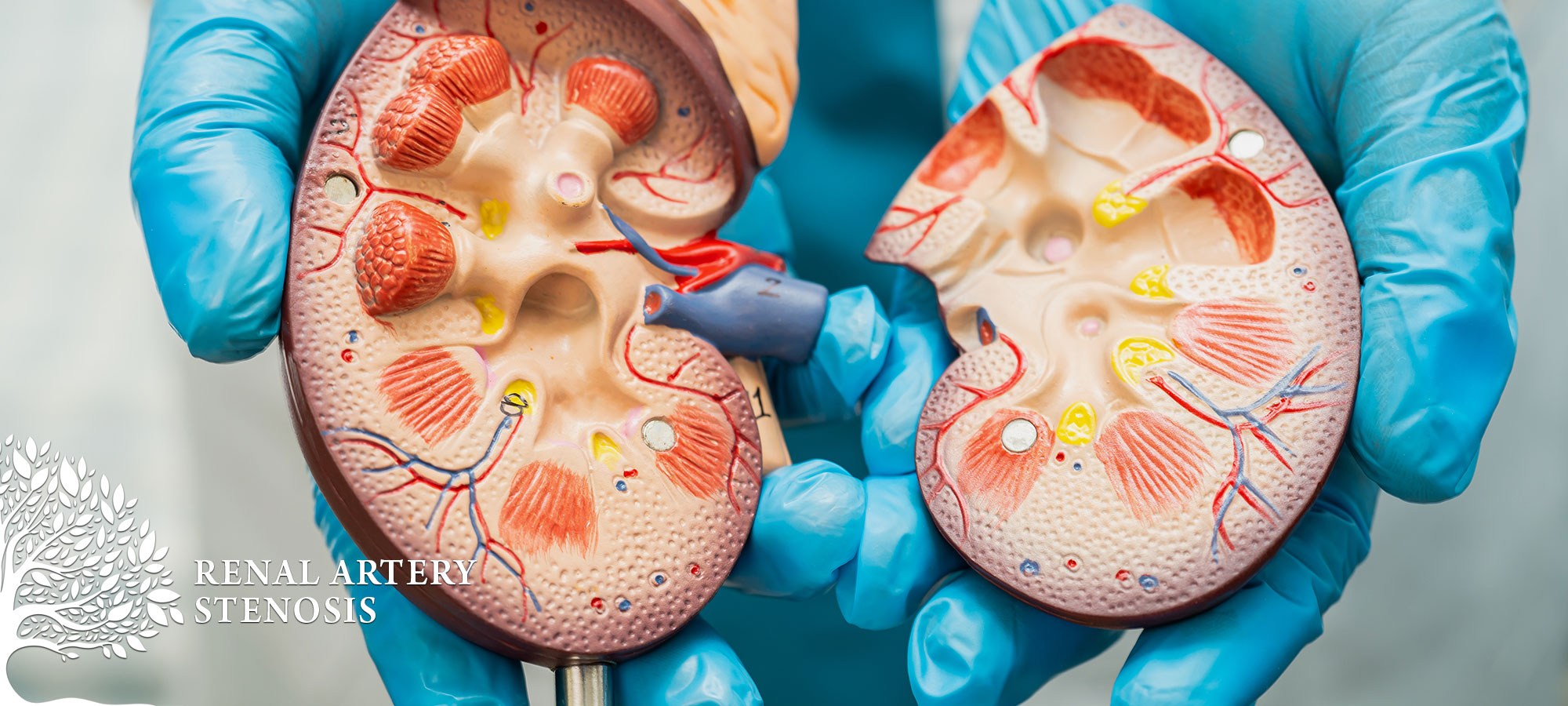
Renal Artery Stenosis (RAS)
Renal Artery Stenosis (RAS) occurs when the arteries supplying blood to the kidneys become narrowed. These arteries carry oxygen-rich blood essential for helping the kidneys remove waste and excess fluids. When these arteries narrow, it can gradually lead to high blood pressure (hypertension), kidney damage, and, in severe cases, kidney failure.
Causes of Renal Artery Stenosis
In most cases, RAS is caused by atherosclerosis, a buildup of fat and cholesterol (plaque) on the artery walls. In rarer situations, fibromuscular dysplasia (abnormal growth of cells in the artery wall) is responsible. This condition is more often seen in younger individuals and women with hypertension, and it may be curable if identified early.

Risk Factors & Symptoms of Renal Artery Stenosis
Risk Factors
- High blood pressure onset before age 30
- Diet high in fat, sodium, and sugar
- Diabetes or family history of diabetes
- Female gender
- Heart disease or vascular disorders
- Elevated cholesterol
- Obesity
- Physical inactivity
- Smoking
Symptoms:
- Blood pressure that remains high despite medication
- Decreased kidney function
- Fluid retention
- Swelling (edema) in the feet and ankles
- Abnormal kidney test results
- Elevated protein levels in urine
Renal Artery Stenosis Diagnosis
Your healthcare provider will review your medical history and conduct a physical exam. Additional tests may include:
• Blood and urine tests to assess kidney performance
• Ultrasound of the kidneys
• Doppler ultrasound of arterial flow
• Arteriogram with contrast for detailed images of the kidneys and vessels
• CT angiogram
Renal Artery Stenosis Treatment
The first line of treatment focuses on managing hypertension and maintaining kidney function. This often involves blood pressure medications, cholesterol-lowering drugs, and daily aspirin. If these measures are insufficient, an angioplasty with stent placement may be performed (a minimally invasive procedure to widen the artery). Surgical bypass is an additional option but is less commonly used; it redirects blood flow around the narrowed area to restore circulation.
Renal Artery Stenosis Prevention
Maintaining a heart-healthy lifestyle (regular exercise, balanced diet, and eliminating risk factors) is one of the most effective ways to lower the chance of developing RAS.
Renal Artery Stenosis Progression
As RAS advances, it can severely damage the kidneys. Symptoms may include changes in urination, swelling, fatigue, muscle cramps, nausea, and abrupt weight loss. If you notice these warning signs, seek medical evaluation promptly.

Renal Artery Stenosis FAQs:
What causes Renal Artery Stenosis?
Most cases are due to atherosclerosis, which is plaque accumulation in the arteries.
What are the key risk factors for Renal Artery Stenosis?
They include age, female gender, high blood pressure, existing vascular disease, chronic kidney conditions, diabetes, smoking, and elevated cholesterol.
How can I prevent Renal Artery Stenosis?
Adopting a heart-healthy lifestyle and controlling modifiable risk factors are crucial. Communicate with your healthcare provider and pay attention to changes in your body.
